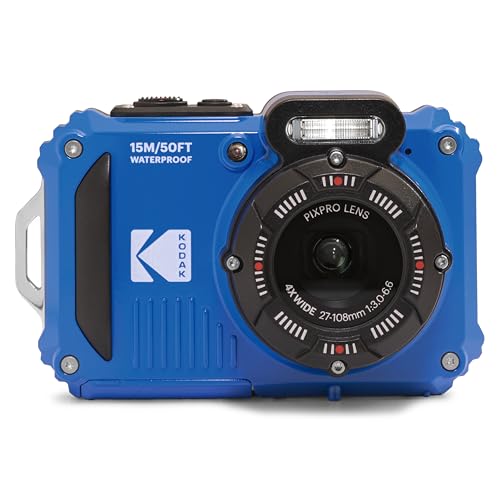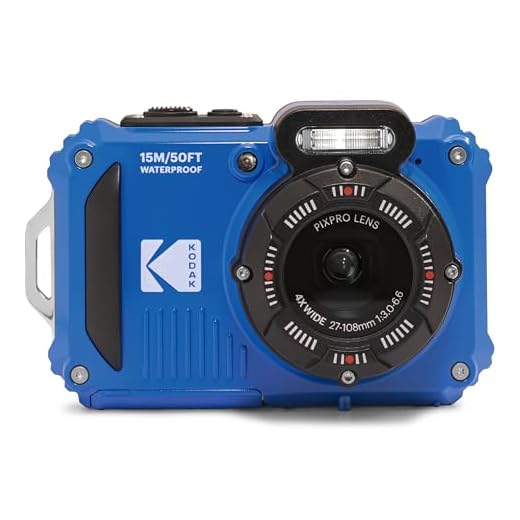
Kodak, a name synonymous with photography, made a groundbreaking leap in the industry with the invention of the first digital camera. This revolutionary device changed the way we capture and share images, paving the way for the digital era we live in today.
It was in the year 1975 that Kodak engineer Steven Sasson developed the world’s first digital camera. This prototype camera weighed a hefty 8 pounds and had a resolution of a mere 0.01 megapixels, but it marked the beginning of a new era in photography.
Despite initial skepticism within the company, Kodak recognized the potential of digital photography and continued to innovate in this field. By the 1990s, digital cameras were becoming more accessible to the public, and the rest is history.
The History of Kodak’s First Digital Camera
In 1975, Kodak engineer Steven Sasson invented the first digital camera. This groundbreaking device weighed almost 9 pounds and was the size of a toaster. It had a resolution of 0.01 megapixels and captured black and white images. The camera used a cassette tape for data storage, and it took 23 seconds to record the first digital image.
Despite its limitations, Kodak’s first digital camera laid the foundation for the digital photography revolution. Over the years, Kodak continued to innovate and improve digital camera technology, eventually becoming a major player in the industry.
George Eastman’s Vision
George Eastman, the founder of Kodak, had a vision of making photography accessible to everyone. He revolutionized the industry with his innovative approach to film and cameras, making photography a popular hobby for people of all backgrounds.
Eastman’s commitment to innovation led to the creation of the first Kodak camera in 1888, which made photography more convenient and affordable. This commitment to accessibility and innovation continued with the development of the first digital camera in 1975, marking a pivotal moment in the history of photography.
Kodak’s Innovation in Photography
Eastman Kodak Company, commonly known as Kodak, has a rich history of innovation in photography. Founded in 1888 by George Eastman, Kodak revolutionized the way people captured and shared moments through the introduction of consumer-friendly cameras and film.
One of Kodak’s most significant contributions to the photography industry was the invention of the first digital camera. In 1975, Kodak engineer Steven Sasson created a prototype digital camera that captured black-and-white images onto a cassette tape. This groundbreaking invention laid the foundation for the digital photography revolution that would follow.
Throughout its history, Kodak has continued to push the boundaries of photography technology, paving the way for advancements in digital imaging and printing. Despite facing challenges in the digital age, Kodak’s legacy as a pioneer in photography innovation remains unmatched.
The Birth of the Digital Camera
Before the invention of the digital camera, photography was primarily done using film cameras. However, in 1975, Kodak engineer Steven Sasson created the first digital camera. This groundbreaking invention marked the beginning of a new era in photography.
The first digital camera was a bulky device that weighed around 8 pounds and captured images at a resolution of 0.01 megapixels. Despite its limitations, this camera paved the way for future advancements in digital imaging technology.
By the 1990s, digital cameras began to gain popularity among consumers due to their convenience and ability to instantly view and share images. Today, digital cameras are ubiquitous, and advancements in technology have led to the development of high-resolution cameras that fit in the palm of your hand.
| Year | Event |
| 1975 | Steven Sasson invents the first digital camera at Kodak |
| 1990s | Digital cameras become popular among consumers |
The Impact on Photography Industry
The invention of the first digital camera by Kodak revolutionized the photography industry. It marked a significant shift from traditional film-based cameras to digital technology, changing the way photographers captured, processed, and shared images.
Quality and Convenience: Digital cameras offered photographers the advantage of instant image review, easy editing, and quick sharing of photos. This convenience and flexibility were unprecedented, allowing for a more efficient workflow and faster turnaround times.
Market Transformation:
The introduction of digital cameras also reshaped the market dynamics of the photography industry. It opened up new opportunities for companies to innovate and develop new products and services, leading to a surge in technological advancements and competition.
The impact of Kodak’s first digital camera continues to resonate in the photography industry today, influencing the way we capture and interact with images in the digital age.
Evolution of Digital Photography
Digital photography has come a long way since the invention of the first digital camera by Kodak in 1975. The early digital cameras were bulky and had limited capabilities compared to today’s advanced models.
Over the years, digital photography technology has evolved rapidly, leading to the development of smaller, more powerful cameras with higher image quality and advanced features. The introduction of digital SLR cameras revolutionized the industry, allowing photographers to capture professional-quality images with ease.
Advancements in sensor technology, image processing algorithms, and connectivity have further improved the capabilities of digital cameras, making them essential tools for photographers of all levels. The rise of smartphone photography has also played a significant role in the evolution of digital photography, with many people now using their phones as their primary camera.
As technology continues to advance, we can expect even more exciting developments in digital photography, with innovations such as mirrorless cameras, computational photography, and artificial intelligence shaping the future of the industry.
Kodak’s Legacy in Digital Imaging
Eastman Kodak Company, commonly known as Kodak, has a rich history in the field of imaging technology. Founded in 1888 by George Eastman, Kodak quickly became a household name in photography with its innovative film and cameras.
Invention of the Digital Camera
While Kodak did not invent the first digital camera, the company played a significant role in the development and popularization of digital imaging technology. In 1975, Kodak engineer Steven Sasson created the first digital camera prototype, which weighed around 8 pounds and captured black-and-white images at a resolution of 0.01 megapixels. This groundbreaking invention laid the foundation for the digital photography revolution that would follow.
Impact on the Industry
Kodak’s early foray into digital imaging set the stage for the transition from film photography to digital photography. The company continued to innovate in the digital space, introducing a range of digital cameras and imaging products that catered to both consumers and professionals. Despite facing challenges in the digital era, Kodak’s legacy in imaging technology remains significant, paving the way for the modern digital photography landscape.
| Year | Event |
|---|---|
| 1975 | Steven Sasson invents the first digital camera prototype at Kodak. |
| 1991 | Kodak releases the first professional digital camera system, the DCS-100. |
| 2003 | Kodak launches the EasyShare system, making digital photography more accessible to consumers. |
FAQ
When was the first digital camera invented by Kodak?
The first digital camera was invented by Kodak in 1975. It was a prototype of a digital camera, but it laid the foundation for the development of digital photography.
Can you provide more details about the first digital camera invented by Kodak?
The first digital camera invented by Kodak was called the “Kodak Digital Camera System”. It was created in 1975 by engineer Steve Sasson. The camera was a large, bulky device that captured black and white images onto a cassette tape. It had a resolution of 0.01 megapixels and took 23 seconds to capture an image. This invention marked the beginning of the digital photography revolution.







